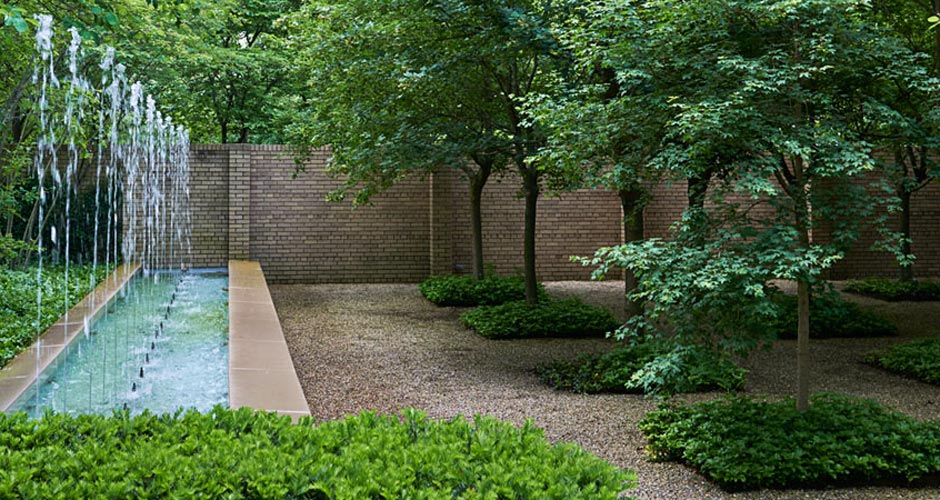We recently enjoyed viewing the touring Dan Kiley tribute now running at the National Building Museum in Washington DC. Presented through the voices of those he collaborated with, whether as professional colleagues or clients, the retrospective exhibit curated by TCLF.org captures the quintessential design qualities of Kiley, the modernist master inspired by Le Notre, and offers deeper insight into Kiley’s motivation and inspiration.
Known for his modern interpretations of such classical elements as allees, bosques and grid patterns, Kiley’s landscapes are further distinguished by his tightly controlled plant palate and bold, geographic hardscapes. The result is a “coherent, restful landscape,” notes Henry Arnold. Kiley’s places of retreat “raise people’s level of consciousness and heighten the awareness of the unity of man and nature,” comments Peter Ker Walker, evidence of Kiley’s able use of “design as a process of discovery.”
 Hamilton Garden, Columbus IN, photo by Millicent Harvey
Hamilton Garden, Columbus IN, photo by Millicent Harvey
But from where does this unique understanding of nature’s ability to inspire emanate?
Cheryl Barton remembers the Kiley home in VT as “immersed in a vast landscape with a powerful presence – a constant reminder that we are part of the natural world.” Kiley is “fascinated with the in between form of landscape experience that is more akin to the spiritual quality of a walk through the woods,” comments Elizabeth K Meyer, resulting in a poetic use of “natural systems as scenographic storytelling device,” observes Michael Van Valkenburgh.
Kiley’s keen understanding of spatial proportion and his ability to reinterpret other landscape typologies combine with his celebration of the natural world as a portal to discovery offering places of retreat and respite to all visitors of a Kiley garden — because above all he understood gardens need people. We agree!
